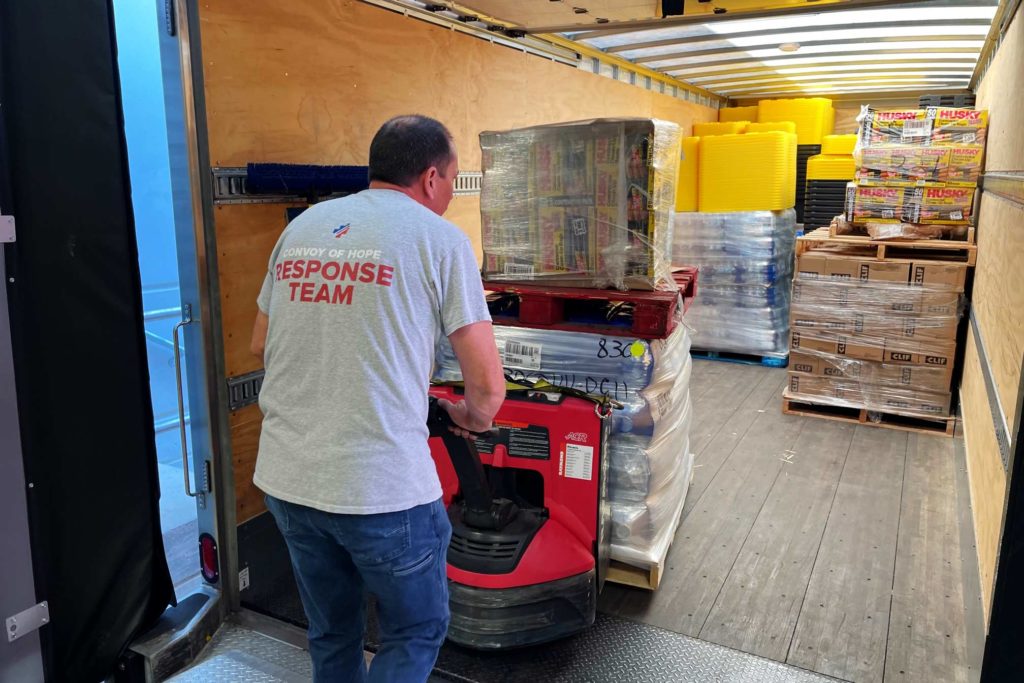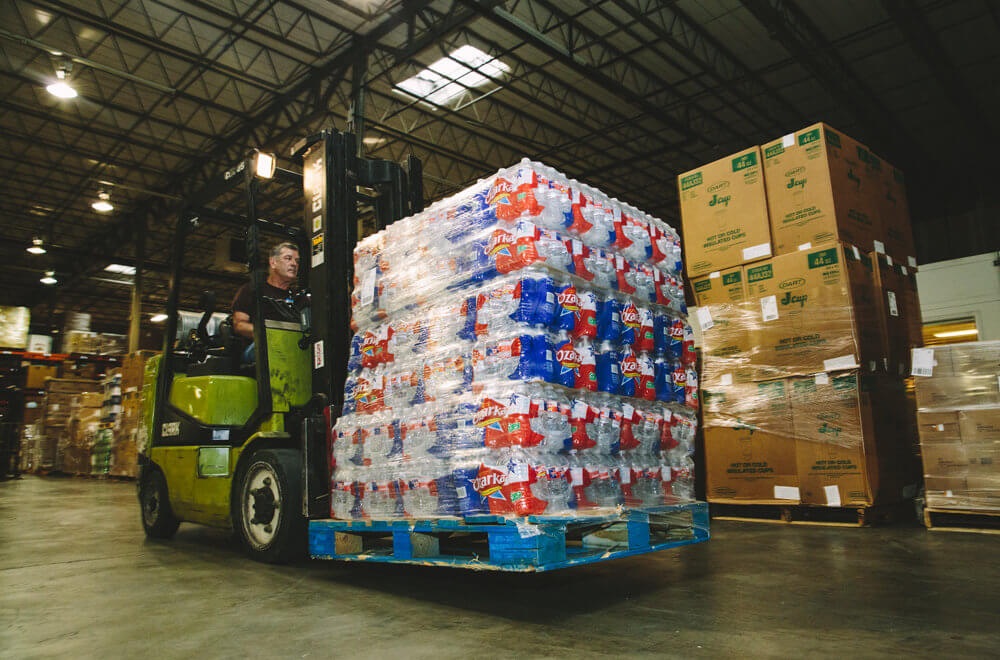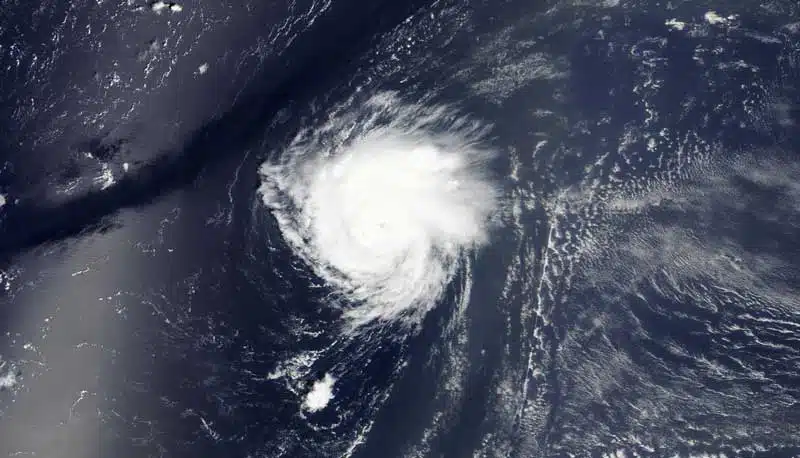Because 2023 is the first year for Idalia to be included in the World Meteorological Organization’s list of cyclone names (replacing the retired Hurricane Irma on the list), there have been no historical hurricanes named Idalia (pronounced ee-DAL-ya) prior to 2023.
A hypothetical Hurricane Idalia had been posted on a gaming website for 2023 before any such storm existed.
On August 27, 2023, the national weather services began tracking Tropical Storm Idalia — the ninth tropical storm of this 2023 hurricane season. On August 28, it was already apparent Idalia was a potential hurricane with a path projected to deeply affect northern Florida into Georgia. Communities in its path took note, and widespread local preparations began. It’s important to prepare for the impact a storm might have in an area.
Idalia’s tropical storm and hurricane designations depend on wind speed. All named storms are a form of tropical cyclone, a rotating, organized system of clouds and thunderstorms that originates over tropical or subtropical waters and has a closed low-level circulation.
Early on, a tropical depression has sustained wind speeds of less than 39 mph and is not given a name.
It is still tracked to determine if it is growing into a tropical storm or hurricane.
Idalia’s classification as a tropical storm and the release of its name happened when its sustained wind speed crested 39 mph. When that speed reached 74 mph on August 29, Idalia became a hurricane.
In any case, a tracked cyclone can pose a threat to lives and property.

Hurricane Idalia FAQs
Idalia was expected to make landfall on Wednesday, August 30, and those predictions proved accurate. At 7:45 a.m. EDT, Idalia reached Florida’s Big Bend region as a Category 3 storm. The hurricane had intensified to a Category 4 storm earlier on Wednesday and weakened only slightly as it came ashore. We will keep this resource updated with the latest information as the hurricane’s impact develops in the region. Stay tuned for future updates as the situation unfolds.
In the meantime, we aim to provide you with essential knowledge and guidance regarding hurricanes, preparedness measures, and safety tips to help you stay informed and prepared for potential hurricane events.
When Was Hurricane Idalia?
Hurricane Idalia made landfall on August 3o about 20 miles south of Perry, Florida, as a Category 3 hurricane.
Where Did Hurricane Idalia Hit?
Hurricane Idalia made landfall along Florida’s Big Bend region and brought a storm surge of 4-6 feet above normal high tide with 9 feet recorded in the island city of Cedar Key. The system quickly weakened as it pushed through northern Florida and returned to tropical storm status after crossing into Georgia. Wind shear from the southwest moved the storm north and east before it emerged into the Atlantic Ocean off the North Carolina coast on August 31. On September 1, Post-Tropical Cyclone Idalia was about 185 miles west of Bermuda, with that island taking precautions against anticipated 60 mph winds.
What Category Was Hurricane Idalia?
Hurricane Idalia reached Category 4 status early on Wednesday, August 30, with sustained winds of 130 mph. The storm weakened only slightly as it came ashore as a very powerful Category 3.
What Time Will Hurricane Idalia Make Landfall?
Even if there had been a previous storm named Idalia, asking, “What time did Hurricane Idalia make landfall?” won’t help you take precautions in 2023. There is no correlation between similarly named hurricanes in history.
But pay attention to any named storm predicted to reach your region. Keep track of any predicted landfall. Don’t make the mistake of waiting until the last minute to reach a safe area. This article will be updated as more details about 2023’s Idalia become available. Hurricane Idalia made landfall at 7:45 a.m. EDT on Wednesday morning, August 30.
How Many People Died in Hurricane Idalia?
Besides the extent of property damage caused by a tropical storm or hurricane, you might naturally ask, “Did anyone die in Hurricane Idalia?”
Sadly, two people were reported killed in Florida during Idalia’s destructive move across that state.
What Was the Path of Hurricane Idalia?
A cyclone’s path can cover thousands of miles. The weather trough of low pressure that eventually became Idalia formed on August 24 in the Eastern Pacific basin off the Central American coast and crossed into the Atlantic basin on August 25. Moving through the western Caribbean Sea, it became Tropical Storm Idalia on August 27. On August 29, after passing near western Cuba, Tropical Storm Idalia became Hurricane Idalia on a path toward Florida. Idalia moved across Florida, Georgia, and the Carolinas, steadily weakening before moving over the Atlantic Ocean toward Bermuda.
Convoy of Hope & Hurricanes

Convoy of Hope brought resources near the area of Hurricane Idalia’s landfall, then set up distribution in Perry, Florida. Convoy of Hope began distributing aid in Perry on August 31 as Idalia — now a tropical storm — reentered the Atlantic Ocean off the coast of North Carolina. Survivors received food, water, and relief supplies that can be difficult to come by in the aftermath of the storm.
Convoy of Hope Disaster Services responds to natural disasters around the world, offering help and hope to impacted communities. The faith-based nonprofit organization continues to expand its children’s feeding initiatives, community outreach, and disaster response.
Convoy responded to its first disaster in 1998 — flooding in Del Rio, Texas, after Tropical Storm Charley. Hurricane response is an annual priority.
The Disaster Services team follows a named storm closely. Within days of a predicted landfall, plans take shape at Convoy’s World Distribution Center.
A convoy of trucks heads to the affected area to resource distribution points once the danger has passed and a community’s needs become clear.
Volunteers and Convoy team members prepare a distribution point, usually a local church. Pallets of supplies offloaded from semi-trucks await the lines of cars that will form to receive groceries, bottled water, bags of ice, cleaning supplies, and other desperately needed resources.
When 2022’s Hurricane Ian smashed across central Florida, Convoy of Hope quickly served more than 17,000 survivors with the help of nearly 500 volunteers. If storm damage merits a long-term recovery response, Convoy may organize follow-up distributions. For example, Convoy held a recovery event in LaPlace, Louisiana, in November 2022 for regions hit hard by 2021’s Hurricane Ida.














